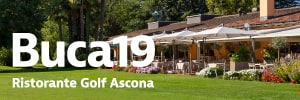Chestnuts
Specialties
In Ticino, for centuries, chestnuts were an important staple food for peasants. The harvest would bring the entire community together and was regarded as a special moment, as it guaranteed subsistence for a good part of the year – its precious fruits were consumed fresh, but also proved to have long shelf life, thanks to drying processes. Although, nowadays, the chestnut plays a secondary role in nutrition, traditions, recipes and lands associated with it are gradually being rediscovered. Chestnut woods are becoming tourist attractions, monumental chestnut trees are being inventorized and new gastronomic specialties are being created.
Chestnuts in Ticino’s peasant world
In rural times, like those of Ticino in past centuries, chestnuts were a staple food. Until around the mid-20th century, chestnuts were consumed up to twice a day, especially during winter. After the harvest – which took place in late autumn – they were eaten either boiled or roasted on an open fire. A good part were, however, dried in a room expressly used for chestnut dessication ¬ (the "metato", also known as a “grà” or “graa” – see explanation below) so that they would last for several months, unless milled into flour. Capable of growing up to 1000 meters in height in sunny areas, nothing was waisted of the chestnut tree: its dried leaves were used as bedding for cattlesheds, while its wood either served as a valuable source of fuel or as building material (pillars, furniture, tools); given its relatively easy preservation, its fruit was used as an emergency food stock.
Chestnut forests constituted a precious resource and were therefore taken care of in compliance with specific communal and patrician regulations. Different species were planted in order to obtain nuts having specific characteristics: i.e. sweet, fit for preservation, etc.
The “maronatt”, merchants who sold chestnuts in the city streets of Italy and France during winter, usually began their journey from Ticino.
The chestnut today
In view of the socio-economic changes that have taken place over the last century, the gradual abandonment of agropastoral activity and depopulation of the valleys, the role of the chestnut tree and its nuts has changed considerably.
The “bread tree” – as it was known, due to its importance – is now being recognized as having played a crucial role in peasant culture of past centuries, and experts are beginning to appraise its worth as an important piece of local history. In 1999 the Association of Swiss Italian chestnut farmers (Associazione dei castanicoltori della Svizzera Italiana) was established, with the intent of raising awareness about the history, culture, cultivation methods, consumption and trade of the chestnut, not to mention organizing the harvesting. Furthermore, monumental chestnut trees are being inventoried and several chestnut woods are in the process of being recovered.
Touristic itineraries, including the “Sentiero del Castagno” (Chestnut Trail) in Malcantone and the “Sentée da l’albur” in the Mendrisio area, have been created.
Every year, the chesnut plays a signicant role in autumnal gastronomic events and new chesnut-based products are being developed (beer, flakes, marrons glacés, tagliatelle, flour, liqueurs and honey). Tourists and the local population gather in October/November for the traditional chestnut festivals that take place in the squares of Ascona, Muggio Valley and other locations.
The loading of the “grà”
In late autumn, in some communes, it is possible to participated in the loading of the “grà”. In a building specifically built for this purpose, the chestnuts are placed on a lattice, underneath which a fire is lit and fed for several weeks, thus allowing the fruit to dry out slowly in order to guarantee longer preservation. For several years, this traditional activity il being proposed in the Maggia Valley (Moghegno), in the Muggio Valley (Cabbio) and in Malcantone (Vezio).
Itinerary: The "Chestnut Trail" in Malcantone (5h, see map)
This thematic itinerary in the chestnut woods of Alto Malcantone crosses through the villages of Arosio, Mugena, Vezio, Fescoggia and Breno, at an altitude of around 700-850 meters. The trail, extending for some 15 kilometres, does not present any major difficulties and involves a hike of approximately 5 hours which can, however, be shortened. The route is open year-round and can be accessed from each village. In addition to an enjoyable walk through natural, scenic surroundings and landscapes, hikers can admire the architectural features of the villages in Malcantone and learn some interesting facts about the numerous chestnut species and their cultivation, thanks to educational panels strategically positioned along the route. Civic and religious buildings of note can also be found on the trail, including the Church of San Michele in Arosio (with its 17th century sundial and 16th century frescos by Antonio da Tradate), the "grà" between Mugena and Vezio as well as traces of a “carbonaia” (a charcoal burner).
For further information see the Lugano Region website (Download PDF).
Hiking through chestnuts woods
Other areas affording pleasant hikes through chestnut woods include the hill above Biasca (a trail that leads to the Santa Petronilla waterfall), the Monte Carasso hill (Curzútt), the Muggio valley (“Sentée da l’albur” between Morbio Superiore, Caneggio and Bruzella) and Capriasca (“Parco del Castagno” in Ponte Capriasca and its surroundings).

 Back to the list
Back to the list


